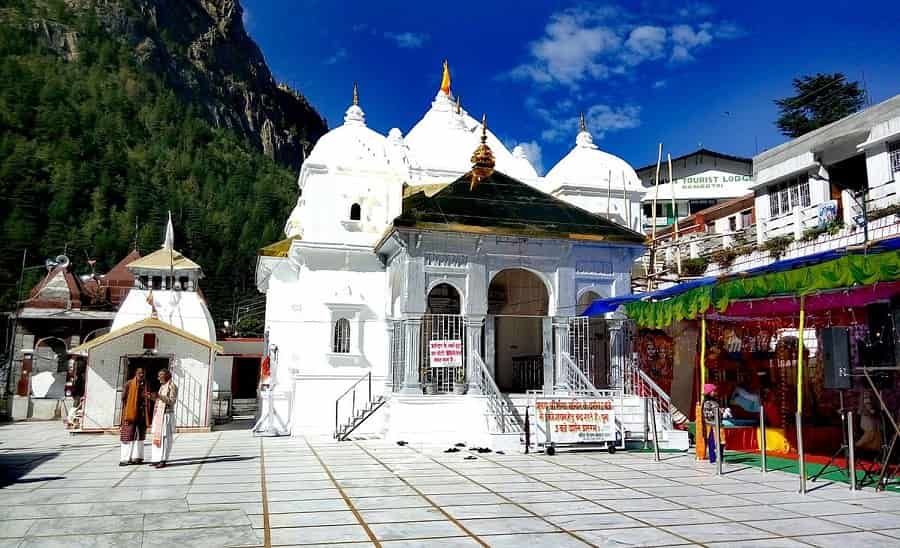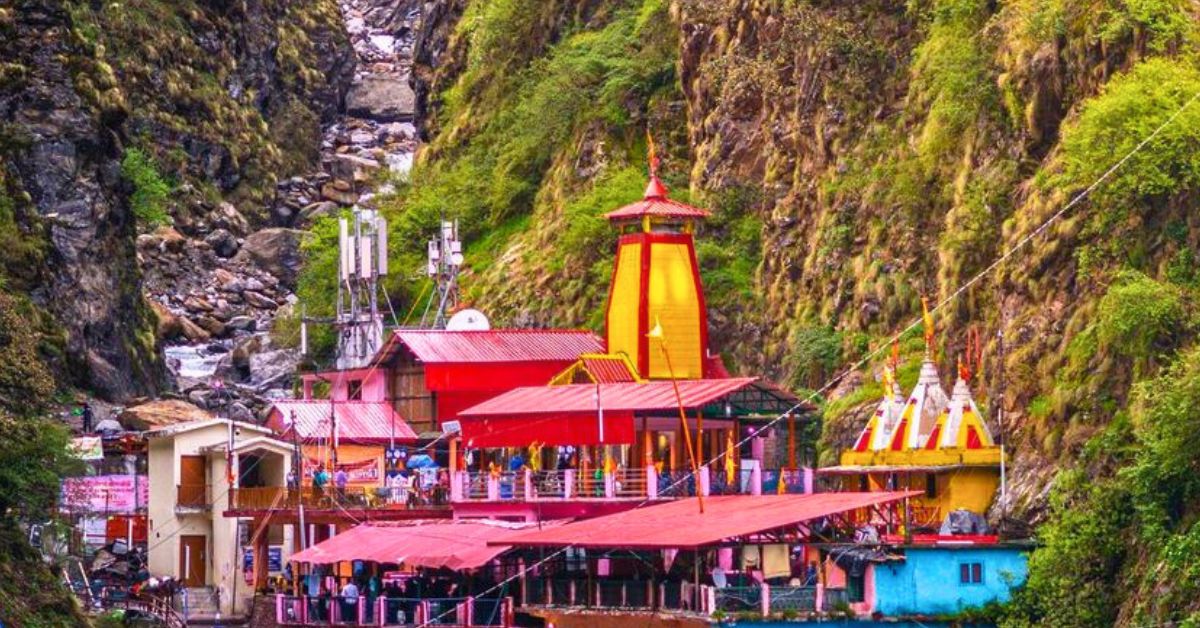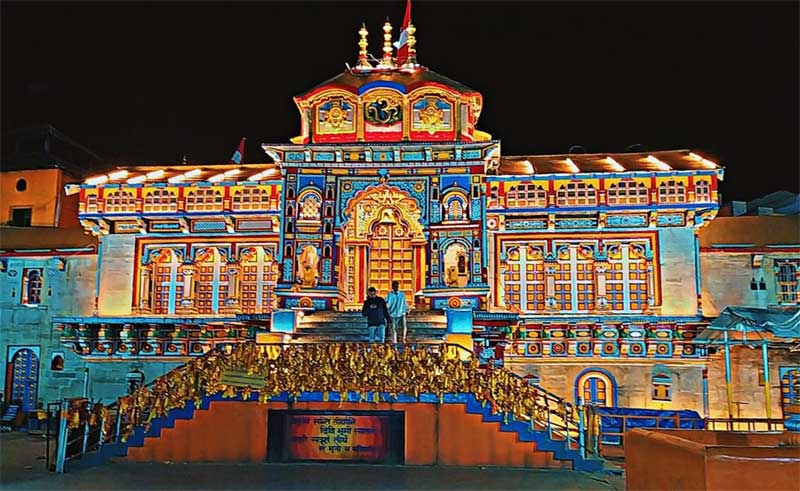Rivers don’t usually begin like this. High up in the Garhwal Himalayas, wrapped in cedar and snow, the Ganga starts her journey. Not quietly, not hidden. She begins with a roar.
Gangotri (गंगोत्री) sits at more than 3000 meters. A cluster of lodges, dharamshalas, tea stalls, and one white granite temple that appears to glow against the dark ridges. The air is sharp. Even in the summertime, your breath fogs in the morning.
The Old Story Everyone Knows
King Bhagirath (भगीरथ) wanted to free the souls of his ancestors. He prayed and fasted for years until Ganga agreed to descend. But she was fierce. If she fell directly, the world would drown. Shiva caught her in his जटा, his tangled hair, and released her gently onto the earth.
People here tell the story simply, almost casually, as if it happened yesterday. And when you stand by the river, hearing it slam against stone, you believe she needed taming.
First Look at the Temple
The temple itself is plain, built of white granite, standing steady at the river’s edge. A few steps lead down to the ghats. Pilgrims dip into the icy water before climbing back shivering, lips blue, but faces calm.
Inside, the sanctum is small. Goddess Ganga sits wrapped in pink and yellow cloth, garlands of marigolds around her. Ghee lamps flicker. Bells ring. And below it all, the river maintains a dashing outdoor, in no way letting you overlook why you came.
Around the Town
Gangotri is tiny. A single street with timber balconies, shopkeepers selling woolens and prayer beads, youngsters chasing each other with bursts of laughter. Smoke from kitchens mixes with the scent of resin from the woodland.
Monks sit via the ghats, wrapped in shawls, chanting softly. Travelers heat their fingers around tin cups of chai. Everything appears slowed by the altitude. Even the communique feels thinner, stretched like breath within the excessive air.
The River Beyond
Most pilgrims don’t stay at the temple. They want to see the glacier where the river starts. Gaumukh (गौमुख), the “cow’s mouth,” lies nineteen kilometers further up the valley. It is an extended stroll, sometimes harsh; however, many say the first sight of the glacier is unforgettable. The water there doesn’t just go with the flow; it breaks out, uncooked and untamed.
Even if you don’t go that far, Gangotri offers you lots. Sit by using Bhagirath Shila (भागीरथ शिला), the rock in which the king is stated to have prayed, and also experience what countless staying power has to sound like.
Festivals That Light the Valley
In May, whilst the idol is carried from her wintry weather domestic in Mukhba (मुखबा), the entire valley appears to return alive. Drums beat, conch shells echo, and people walk with plant life in their arms.
On Ganga Dussehra, lamps are set afloat inside the water. Flames float down the contemporary, scattering mild across the darkish surface. On Diwali, while the idol returns to Mukhba for winter, torches line the path out of the metropolis, as though escorting a mother domestic for her relaxation.
And every evening in season, the आरती at the ghats pulls people together. Priests chant, lamps move in circles, and the river swallows the sound.
Winter Silence
By late October, the air turns sharper. Snow begins to seal the road. The temple closes, and the idol is carried back to Mukhba. Gangotri falls quiet. Guesthouses shut their doors, and only a handful of families stay behind.
The river keeps moving, half-frozen, carrying mist in the early light. Locals say she never really leaves, even when the temple sleeps.
If You Go
The season runs from May to October. Outside these months, the road is closed due to snow.
Gangotri is about 100 kilometers from Uttarkashi, a drive of long bends and sudden drops. Don’t rush.
Even in summer, nights are cold. Carry woolens. In the monsoon, landslides are common, so check conditions before starting.
Stays are simple. Dharamshalas and guesthouses serve hot dal, rice, and roti. It won’t be fancy, but after a day on the road, it feels enough.
Take the river seriously. The water is freezing. If you bathe, step slowly, don’t dive.
What You Take Away
For a few, it's far from the sight of the white granite temple sparkling at dusk. For others, it is the sound of the river, louder than notion, regular as a heartbeat.
You may take into account the smell of incense blending with smoke from village kitchens. Or the way your breath burned a little with each step in thin air. Or simply the quiet after the evening आरती, when the crowd drifts away and only the river keeps speaking.
Gangotri doesn’t overwhelm you with size or splendor. It anchors you. Reminds you that everything flowing wide must begin somewhere small.
And when you leave, the sound of the Ganga follows you down the valley. In buses, in bends of the road, even far away in the plains, you still hear her rushing. She doesn’t let go. Maybe she isn’t meant to.




